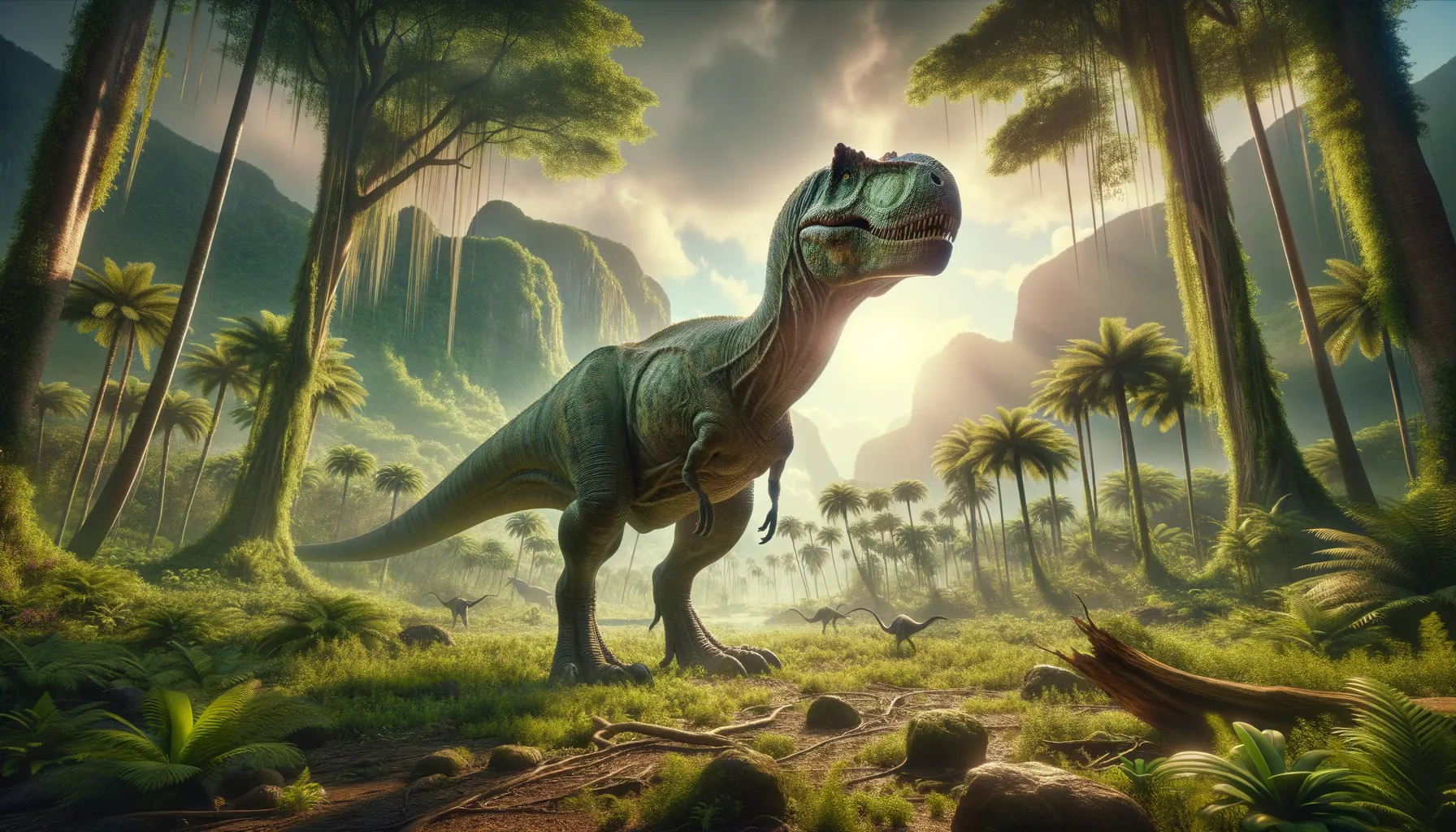
Ruyangosaurus
A giant of the ancient Asian landscape.
Period
Cretaceous
Length
Estimated to be about 30 meters long.
Height
Estimated to be around 8 meters tall at the shoulder.
Weight
Roughly 40,000 kilograms, akin to other large sauropods.
Ruyangosaurus was a gigantic herbivorous dinosaur from the Cretaceous period, notable for its enormous size and long neck. It was discovered in China and is considered one of the largest known dinosaurs. As a member of the sauropod family, it was equipped with a long tail and large, pillar-like legs, facilitating its support and movement. This dinosaur roamed the earth millions of years ago, living in lush, green areas with abundant vegetation.
Diet
Ruyangosaurus was an herbivore, consuming vast amounts of plant material daily. Its diet likely consisted of leaves, ferns, and possibly conifer needles, which it could reach using its long neck.
Hunting
As a strictly herbivorous dinosaur, Ruyangosaurus did not hunt. Instead, it foraged for food, using its size to reach higher vegetation and possibly dislodge edible plant material.
Environmental challenges
During the Cretaceous period, Ruyangosaurus faced various environmental challenges, including seasonal changes in vegetation availability. Being such a large animal, finding enough food to sustain its massive size would have been a constant challenge. Additionally, its great size might have restricted its movement within certain terrains, such as dense forests or steep inclines.
Speed
Ruyangosaurus likely moved slowly due to its massive size.
Lifespan
Estimated to be several decades, similar to other sauropods.
First discovery
First discovered in the Ruyang Basin, Henan, China.
Fun Facts
- Ruyangosaurus was a gigantic sauropod dinosaur that lived during the Early Cretaceous period, around 100 million years ago.
- It was discovered in the Ruyang Basin in Henan Province, China, and is named after the location of its discovery.
- This dinosaur is known for being one of the largest sauropods, with estimates suggesting it could have reached lengths of up to 30 meters (98 feet).
- Ruyangosaurus was a herbivore, which means it primarily fed on plants and likely used its long neck to reach vegetation high up in trees.
- Despite its massive size, it is believed that Ruyangosaurus, like other sauropods, had relatively small heads.
- The discovery of Ruyangosaurus has provided valuable insights into the diversity and evolution of sauropod dinosaurs in Asia.
Growth and Development
Ruyangosaurus would have experienced a long growth period, similar to other large sauropods. From hatching from eggs roughly the size of a basketball, these dinosaurs would reach their full massive stature over several decades. Their rapid early growth rates would have helped them achieve large sizes quickly, possibly as a defense against predators.
Habitat
Ruyangosaurus inhabited lush, forested environments that provided ample food sources. These areas likely included river deltas and floodplains, where vegetation was dense and varied. Such habitats were suitable for their large groups, supporting their need for large quantities of foliage.
Interaction with other species
Ruyangosaurus likely coexisted with various other dinosaurs and prehistoric creatures, including possible predators. Its massive size would have made it less vulnerable to attack, but young individuals could have been at risk from carnivorous dinosaurs. It might have formed herds for protection and social interaction.
Natural lifespan
Ruyangosaurus likely had a lifespan similar to other large sauropods, living several decades.
Reproduction
Ruyangosaurus likely reproduced by laying eggs in clutches, similar to other sauropods. The nesting sites might have been communal to increase the chances of survival. The young were probably precocial, meaning they were somewhat independent soon after hatching but still required protection from adults.
Social behaviour
Ruyangosaurus might have been social, forming groups or herds for protection and cooperative foraging. Herding behavior potentially offered safety in numbers against predators. Within these groups, communication could have occurred through vocalizations or physical movements, although specific behaviors remain speculative.
Fossil locations
Fossils of Ruyangosaurus have been primarily found in the Ruyang Basin of Henan Province in China. These discoveries have provided valuable insights into the size and structure of the dinosaur. The region is known for its rich deposits from the Cretaceous period, offering a glimpse into the diverse prehistoric life that once thrived there.
